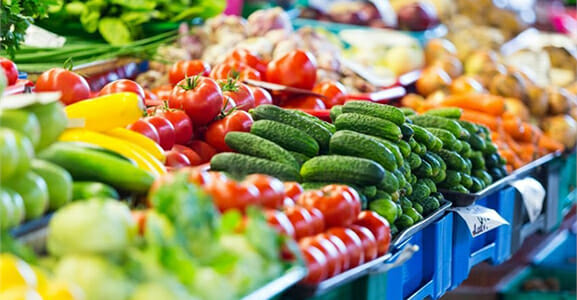By Amanda Yeo, Research Analyst at EMIR Research
While Malaysia has demonstrated its cutting-edge capabilities in the palm oil, rubber and cocoa production, the agro-food sector is relatively less dynamic – as it is focused almost entirely on rice production despite the fact that rice only consists less than 1 percent of household expenditure in Malaysia nowadays.
Such scenario is worrying as the Covid-19 pandemic has exposed how vulnerable Malaysia’s food supply chain is, which results from the movement restrictions of goods and people, changes in demand and habits of consumers, closure of food production facilities, restricted food trade policies and financial pressure in the food supply chain.
Due to the restriction on traffic and market operating hours during the Movement Control Order (MCO), farmers have had to dump hundreds of tonnes of vegetables as they faced constraints in delivering perishable items especially to major cities in Malaysia.
On the other hand, fishermen had to dump fishes into the sea because they were unable to send these to the markets in major cities. All of this resulted in a huge amount of food wastage, which also disrupted the agricultural production and food processing chain. Farmers and fishermen also found it challenging to make ends meet as they lost their source of income.
However, as Malaysia has yet to fully diversify its agricultural production base, the non-agro-food sub-sector in the form of oil palm still remains a major contributor to the agricultural sector which was 37.7 percent in 2019 according to the Department of Statistics Malaysia (DOSM). This is followed by other agricultural activities (25.9 percent), livestock (15.3 percent), fishing (12.0 percent), forestry & logging (6.3 percent) and rubber (3.0 percent).
Although Malaysia’s rice output increased by only 44 percent relative to the rate of 61 percent for fruits and vegetables between the period from 1990 to 2018, the country still mainly focuses on rice production.
As it is, we have become increasingly dependent on high-value imported foods even though the country is rich in natural resources. As of now, the self-sufficiency level (SSL) for fruits, vegetables and meat products stands at 78.4 percent, 44.6 percent and 22.9 percent, respectively.
Although Malaysia has rice-centric agricultural policies, ironically 30 percent of rice supply still has to be imported from other countries such as Thailand, Vietnam and India as Malaysia’s current SSL for rice only stands at 70 percent.
To move away from rice-centric production, the government needs to empower farmers and the relevant stakeholders, stimulating the private sector in the agro-food sector and supporting that sector through the actions of facilitating, brokering, and investing. This in turn would allow diversification of the agro-food sector into more crops and enhance the supply and affordability of a wide range of minimally processed plant-based foods, as suggested under the latest Malaysia Economic Monitor “Sowing the Seeds” report by the World Bank.
With the current administration’s applaudable commitment in tackling food security related issues, this would provide the opportunity for Malaysia to review the current national food security policy by addressing productivity, resources optimisation, sustainable consumption, foreign workers, climate change, water and land scarcity, health, disaster, mechanisation and automation and not least, the need for (agro-food) crop diversification.
With the formation of the Cabinet Committee on National Food Security Policy since March 2020, Malaysia would be able to provide a diverse range of nutritious food while ensuring stable rice supply. When Budget 2021 was presented, it sparked hope for agro-food entrepreneurs to rejuvenate the supply chain besides diversifying their production.
The following are the key initiatives introduced under Budget 2021:
- Extension of the Community Farming Programme for the semi-urban and rural communities;
- Implementation of the Organic Agriculture Project;
- Implementation of the e-Satellite Farm Programme in the form of matching grants of up to RM30,000 to the Area Farmers’ Organisations (Pertubuhan Peladang Kawasan/PPK) for the purpose of purchasing agriculture equipment based on the Internet of Things (IoT) including drones;
- Funding under the Agrofood Value Chain Modernisation Programme of up to RM1 million at a rate of 3.5 percent for a period of 10 years for agricultural entrepreneurs to procure equipment and technology based on Industrial Revolution 4.0 (IR4.0);
- Implementation of impactful and high-value farming projects through collaboration with state governments such as pineapple farming in Johor and freshwater prawns in Negeri Sembilan;
- Provision of subsidies and incentives to farmers and fishermen. This includes paddy price subsidy of RM570 million, subsidies and incentives for paddy crop of RM960 million, and subsidies for Padi Bukit fertilisers of RM40 million. These assistances will benefit more than 300,000 paddy farmers nationwide including Padi Bukit farmers in Nabawan, Sabah and Kanowit, Sarawak;
- Microcredit Financing Scheme under Agrobank which will provide more opportunities to the small and medium-sized enterprises (SMEs), women and youth wanting to venture into the agro-food sector with starting capital, while the existing entrepreneurs can use the fund to restart their affected business.
By putting greater emphasis on the agro-food sector, the government could empower farmers to plant more nutritious, higher-value crops; to improve their soil through modern technologies application (i.e., IoT, Big Data and artificial intelligence (AI)); and to benefit from increased opportunities by earning adequate returns on their generally small landholdings.
As illustrated by the “Kiss the Ground” Netflix documentary, healthy soil is critical to diversifying the agricultural base. Not only it would improve biodiversity, but it also helps to improve the quality of food produce and life of the farmers.
In addition, as the government seeks to promote greater private sector involvement, it also needs to change the existing regulations to further protect the local rice supply chain, thus encouraging the growth of new businesses besides developing a more dynamic and resilient agro-food economy.
Aside from rice subsidies, the government could also provide seeds, fertilisers and pesticides related subsidies paid directly to the farmers through a coupon system.
For instance, the paddy farmer can use the coupon to buy high-quality seeds from any vendor or company. The vendor also can use the coupon to claim payment from the government. Not only this approach would create healthy competition among vendors, but it also would stimulate agricultural activities.
At the same time, it would motivate farmers to produce high-quality agricultural products with sufficient quantities for domestic needs, allowing Malaysia to be less dependent on imports.
And given that the current youth involvement in the agriculture sector is only 240,000 youths or 15 percent of total farmers in Malaysia, the Ministry of Agriculture and Food Industry (Mafi), Ministry of Entrepreneur Development and Cooperatives (Medac) and Ministry of Youth and Sports (MYS) have to craft training programmes and develop grant initiatives together – attracting the younger generation of agropreneurs to get involved in the agro-food sector.
These ministries also can work with the Farmers’ Organisation Authority (Lembaga Pertubuhan Peladang/LPP), Department of Agriculture (DOA), and Malaysian Agricultural Research and Development Institute (Mardi) to develop more comprehensive agro-food initiatives.
While providing job opportunities for youths to embark in the agro-food sector, it would also generate higher income and productivity among these young agropreneurs on top of increasing the contribution of agriculture to the gross domestic product (GDP).
By strengthening and upgrading Malaysia’s agro-food system, it would allow the nation to pursue other policy priorities such as embodied in the Shared Prosperity Vision (SPV) 2030, the forthcoming National Science, Technology and Innovation Policy 2021-2030 and an updated National Biotechnology Policy (NBP), among others.
The upcoming 12th Malaysia Plan (12MP) and National Agro-Food Policy (NAFP) 2.0 provide timely opportunities for the government to develop a sustainable agro-food sector in the context of the on-going impact of Covid-19 as well as foster agricultural modernisation by leveraging on IR4.0.









